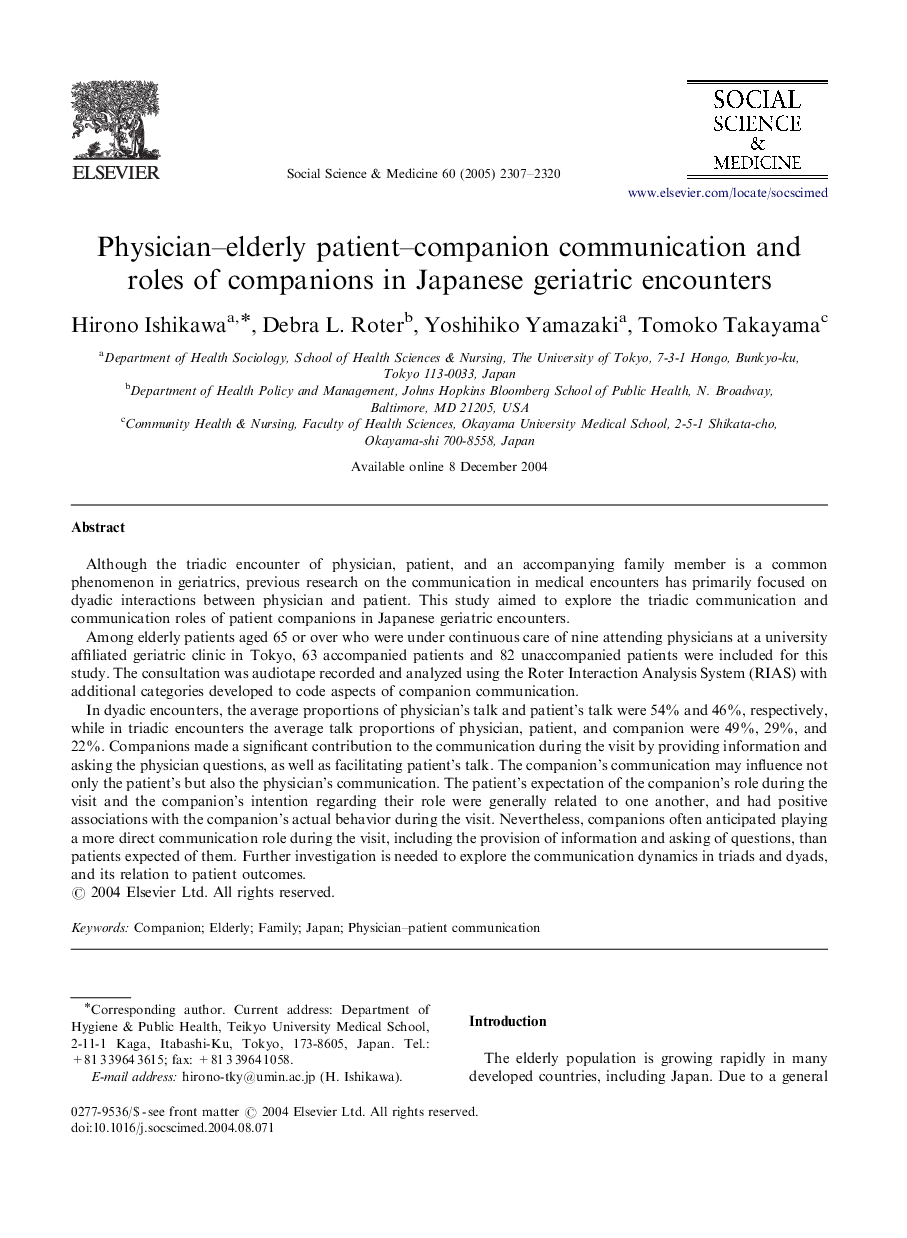| کد مقاله | کد نشریه | سال انتشار | مقاله انگلیسی | نسخه تمام متن |
|---|---|---|---|---|
| 955280 | 927728 | 2005 | 14 صفحه PDF | دانلود رایگان |

Although the triadic encounter of physician, patient, and an accompanying family member is a common phenomenon in geriatrics, previous research on the communication in medical encounters has primarily focused on dyadic interactions between physician and patient. This study aimed to explore the triadic communication and communication roles of patient companions in Japanese geriatric encounters.Among elderly patients aged 65 or over who were under continuous care of nine attending physicians at a university affiliated geriatric clinic in Tokyo, 63 accompanied patients and 82 unaccompanied patients were included for this study. The consultation was audiotape recorded and analyzed using the Roter Interaction Analysis System (RIAS) with additional categories developed to code aspects of companion communication.In dyadic encounters, the average proportions of physician's talk and patient's talk were 54% and 46%, respectively, while in triadic encounters the average talk proportions of physician, patient, and companion were 49%, 29%, and 22%. Companions made a significant contribution to the communication during the visit by providing information and asking the physician questions, as well as facilitating patient's talk. The companion's communication may influence not only the patient's but also the physician's communication. The patient's expectation of the companion's role during the visit and the companion's intention regarding their role were generally related to one another, and had positive associations with the companion's actual behavior during the visit. Nevertheless, companions often anticipated playing a more direct communication role during the visit, including the provision of information and asking of questions, than patients expected of them. Further investigation is needed to explore the communication dynamics in triads and dyads, and its relation to patient outcomes.
Journal: Social Science & Medicine - Volume 60, Issue 10, May 2005, Pages 2307–2320